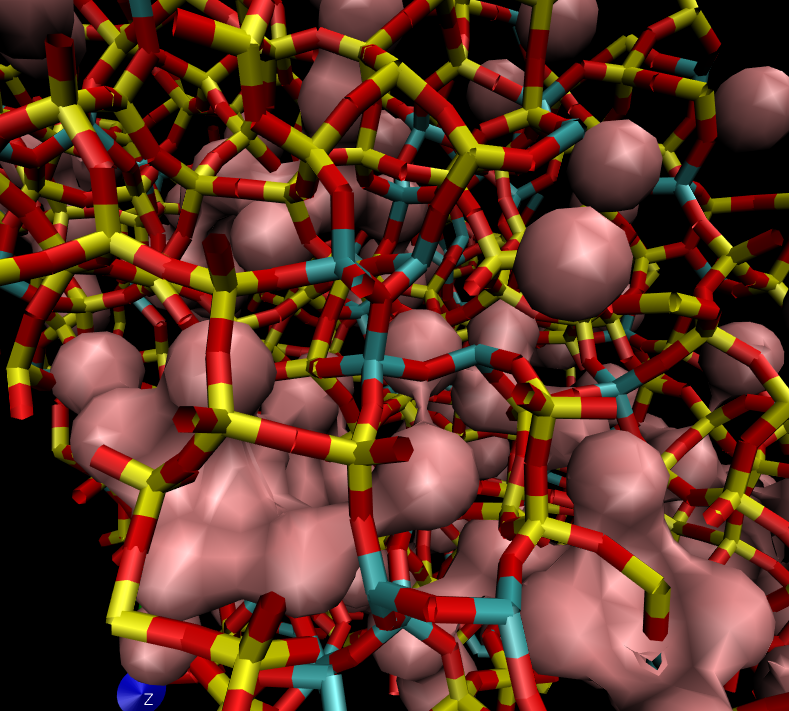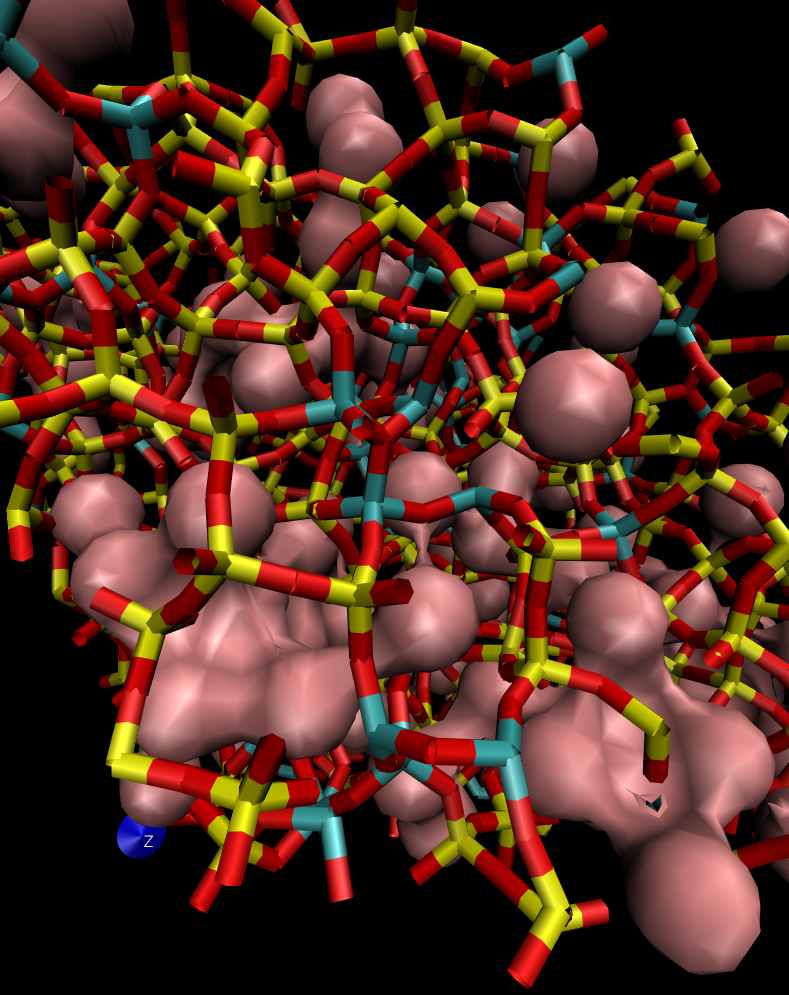These glasses have a network of oxygen atoms bonded to silicon and aluminium atoms. Other elements such as sodium and potassium form clusters or percolating channels in the alumino-silicate network, which can be imagined as motorways running through a city centre. These nanometric atomic veins have sizes that depend on the composition of the glass and strongly affect its properties, in particular the way in which its parent liquid flows in an industrial furnace or in a volcanic edifice.
To directly and indirectly visualise the presence of such nano-arrangements, the researchers combined different types of experiments and molecular dynamics simulations. At the IPGP, they measured the viscosity (resistance to flow) of liquids at high temperatures (between 800 and 1600°C), as well as the density of glasses formed by quenching these liquids. Using techniques for determining the structure of glasses and liquids, such as Nuclear Magnetic Resonance (CEMHTI-CNRS, Orléans) and Raman spectroscopy (IPGP-Paris), they were able to link variations in properties to variations in structure. They have also visualised the dynamics of these liquids and the structure of the glasses obtained by their quenching using molecular dynamics simulations involving thousands of atoms, the results of these simulations having been compared with their experiments to validate their accuracy.
This approach brings together different experimental and computational techniques. It required the collaboration of 7 researchers from 4 different fields (earth sciences, chemistry, physics, materials science) affiliated to 6 universities in 4 countries around the world. This collaboration, initiated at the Institut de Physique de Globe de Paris (CNRS-INSU) under the direction of Daniel R. Neuville, by Charles Le Losq (currently at the Australian National University), led to the discovery of the invisible after more than four years of work. This required the indispensable collaboration of Pierre Florian and Dominique Massiot from CEMHTI (CNRS-INC, Orléans), as well as Neville Greaves from Cambridge University and Wenlin Chen and Zhongfu Zhou from Aberystwyth University in Great Britain.
The fundamental results obtained could very soon affect our daily lives. One of the major objectives in materials science is to produce highly resistant glass for use in new mobile technologies (phones, tablets, etc.). With this new knowledge, manufacturers could be in a position to produce more resistant screens. Indeed, the presence of clusters and channels of atoms at the atomic scale has a major influence on the properties of glass, so controlling the presence and quantity of such nano-arrangements could make it possible to modify the properties of glass and produce new glass that is more resistant to fracture and also to chemical corrosion.
In addition to these properties, the presence of molecular channels and clusters influences the ability of atoms to diffuse in the glass, which could be of critical importance for the storage of long-lived nuclear waste. Radionuclides are stabilised in glass matrices, whose properties (corrosion resistance, diffusivity of elements, etc.) are critical in retaining radionuclides until their radioactive activity reaches low levels. The presence of molecular channels could affect these properties. Mixing different elements within them could help to reduce the ability of these elements to diffuse into the glass. This study shows how the composition of glass influences the presence of such nano-arrangements, making it possible to find new processes for producing glass suitable for storing nuclear waste.
Alongside these industrial interests, the authors of the study are also interested in the implications of these discoveries for geological processes. The cooling of the Earth over 4 billion years ago and of the ocean of magma at its surface led to the crystallisation and formation of the Earth’s mantle and crust. The physical properties of molten alumino-silicate rocks influenced these events and still influence the dynamics of current volcanic eruptions. The data from this study thus improves our understanding and modelling of variations in the physical properties of molten rocks, which will help to understand how alumino-silicate molten rocks have influenced the Earth’s geological history.
Ref:
Charles Le Losq, Daniel R. Neuville, Wenlin Chen, Pierre Florian, Dominique Massiot, Zhongfu Zhou & George N. Greaves, Percolation channels: a universal idea to describe the atomic structure and dynamics of glasses and melts, Scientific Reports 7, Article number: 16490 (2017), doi:10.1038/s41598-017-16741-3









